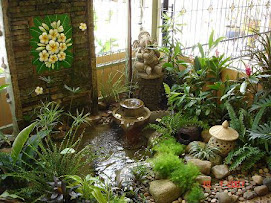Butterfly Gardening
A unique kind of gardening is gardening for wildlife. You can apply these techniques to your garden and aim to attract and sustain desirable wildlife. Butterflies and moths make a garden really come alive and help nourish our delight in the natural world. You can try to attract some of the world's loveliest creatures by the use of native plants in your landscape.
Attracting butterflies to your garden can be easy if you keep the following points in mind:
First of all you need to provide food for caterpillars and nectar for adults throughout the growing season. For this you need to plant a wide range of plants. If it is possible you should plant two or more plants of each species. Swaths of color and fragrance are easier for butterflies to spot than single plants.
It is important to have a diversity of habitats. Most adult butterflies find nectar in sunny areas, but most larval food plants grow in shade. Mimic nature and grow layers of herbaceous and woody vegetation. Woody plants are important in butterfly gardens - many trees and shrubs are host plants as well as popular sites to stay during the wintertime.
Take a more relaxed approach to turf care and to maintaining the less formal areas of your garden beds: practice tolerance and let some 'weeds' like violets decorate the lawn and garden beds. Many weeds are larval food plants and nectar plants.
Leave dead foliage of many perennials up until early spring to allow for winter cover, and do not be too tidy in your spring cleanup. Some butterflies make it through the winter as larvae or pupae in leaf litter at the base of host plants: only rake leaves up where you absolutely need to, such as an exceptionally thick layer where many leaves blow and accumulate, and leave most of the leaves on your garden beds. Only a few natives that grow in the shade are sensitive to rot when covered up by a light layer of leaf debris, such as cardinal flower (Lobelia cardinalis).
With your gardening you should limit or eliminate pesticide use, especially insecticides, because butterflies are insects. Many insecticides do not discriminate between 'good' and 'bad' insects. This includes organic pesticides such as BT, a popular insecticide used to control unwanted caterpillars and mosquitoes. The populations of many butterfly species have been reduced by insecticide sprays to control gypsy moths and mosquitoes.
In addition to food, butterflies need shelter, water, warmth, and minerals. Mud puddles, moist soil or sand, rotting fruit, tree sap, and dung are good sources of minerals and moisture. Sheltered sunlit spots such as rocks or a patch of sand are good areas for butterflies to bask in on cooler days.
As you can see, butterfly gardening is not much work and the result can be amazing.
Garden and Flower Info is the most complete site for all your Gardening and Flower questions. Only readers of this article get 25% discount on our latest product! Use this coupon code: butterflygarden
Article source : http://www.amazines.com/



No comments:
Post a Comment